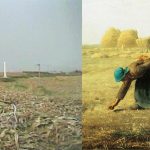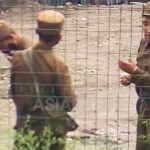North Korea’s fortifications along the China-North Korea border are so heavy that one could confuse the area with one in dispute between the two countries. Across the river from North Korea, however, is China, the country’s biggest ally. The Kim Jong-un regime intensified security along the Yalu and Tumen rivers starting in 2020, ostensibly as part of efforts to block the spread of the COVID-19 virus. The regime’s real aim, however, has been to prevent its people from fleeing or crossing over into China. In late September, ASIAPRESS commissioned a Chinese reporting partner to approach a farming area in Sakju County, North Pyongan Province, to take photographs that show conditions inside North Korea. (KANG Ji-won / ISHIMARU Jiro)
◆ A multi-layered security network aimed at keeping North Koreans inside their country
ASIAPRESS obtained testimony from a security guard in regards to the security situation along the border as shown in the photographs taken in late September. “A,” a noncommissioned officer in the border patrol, is tasked with guarding the upstream area of the Yalu River. A reporting partner in Yanggang Province met with him in August. Starting in July, North Korean authorities loosened restrictions on movement put in place due to the pandemic, which allowed soldiers to leave their bases. “A” is a veteran border guard in his late 20s.
The testimony provided by “A” about the conditions in his area may be different from how security is managed in the places photographed in late September. Below, brackets have been used to delineate testimony given by “A.”
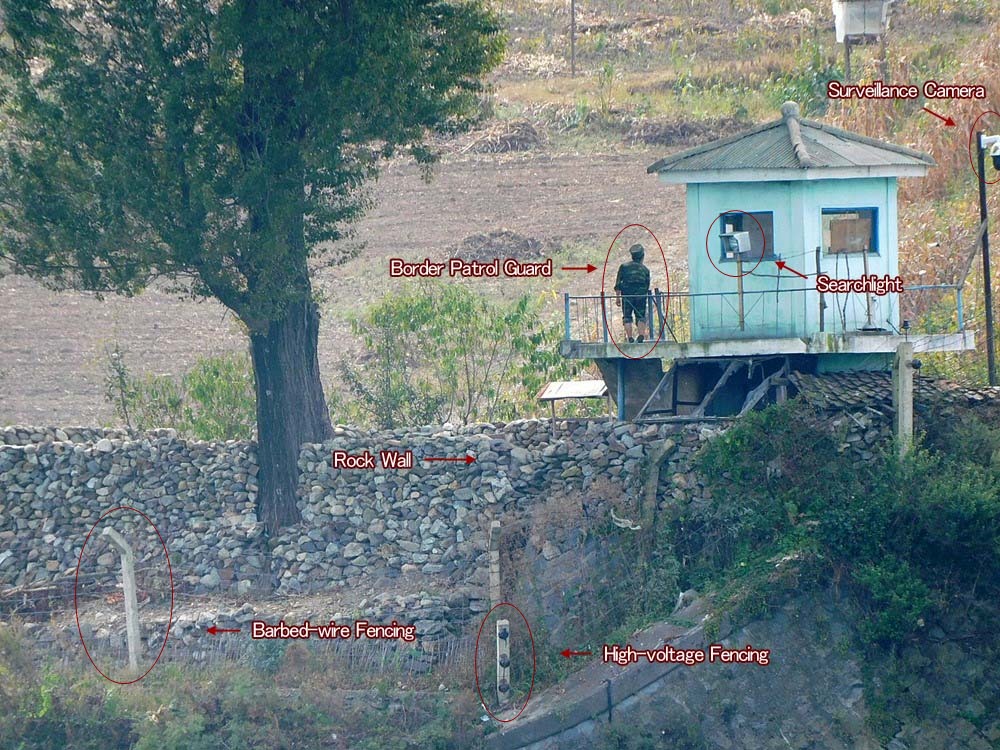
◆ Are surveillance cameras and electrified barbed-wire fences really operating?
Photo 1 shows a facility near a border patrol post. The Yalu River flows right below the sentry post, and the photo shows that people can’t approach the river very easily due to multiple layers of barriers. Surveillance cameras appear to be used to conduct surveillance over a wide area.
According to “A,” [surveillance cameras are operating 24-hours a day. Specialists are monitoring the cameras at places where many people cross, and videos are recorded so they can be sent up the line to superiors].
The photographs clearly show that high-voltage wires have been installed alongside barbed-wire fencing. Are the wires really electrified, particularly given that North Korea has a poor electricity situation?
“A” told the ASIAPRESS reporting partner that [the electricity situation is very bad, but electricity does flow through the barbed wires at arbitrary times, so even guards fear the wires. On rainy days, guards avoid going toward the barbed wire fencing because they’re afraid of getting electrocuted.]
The reporting partner in Yanggang Province said that “the authorities sometimes tell local people to stop children from going near the barbed wires to avoid electrocution.”
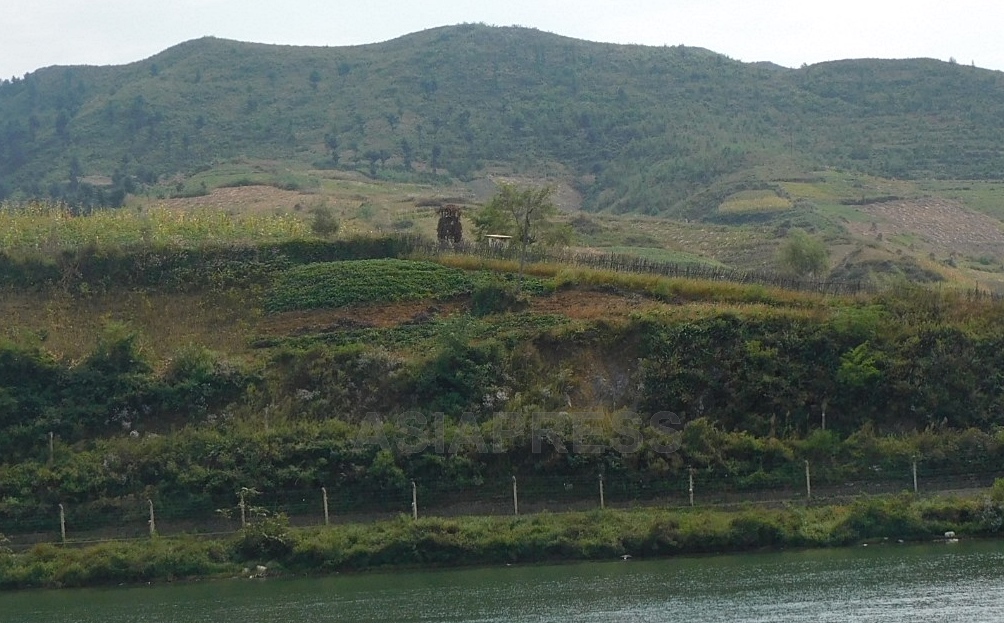
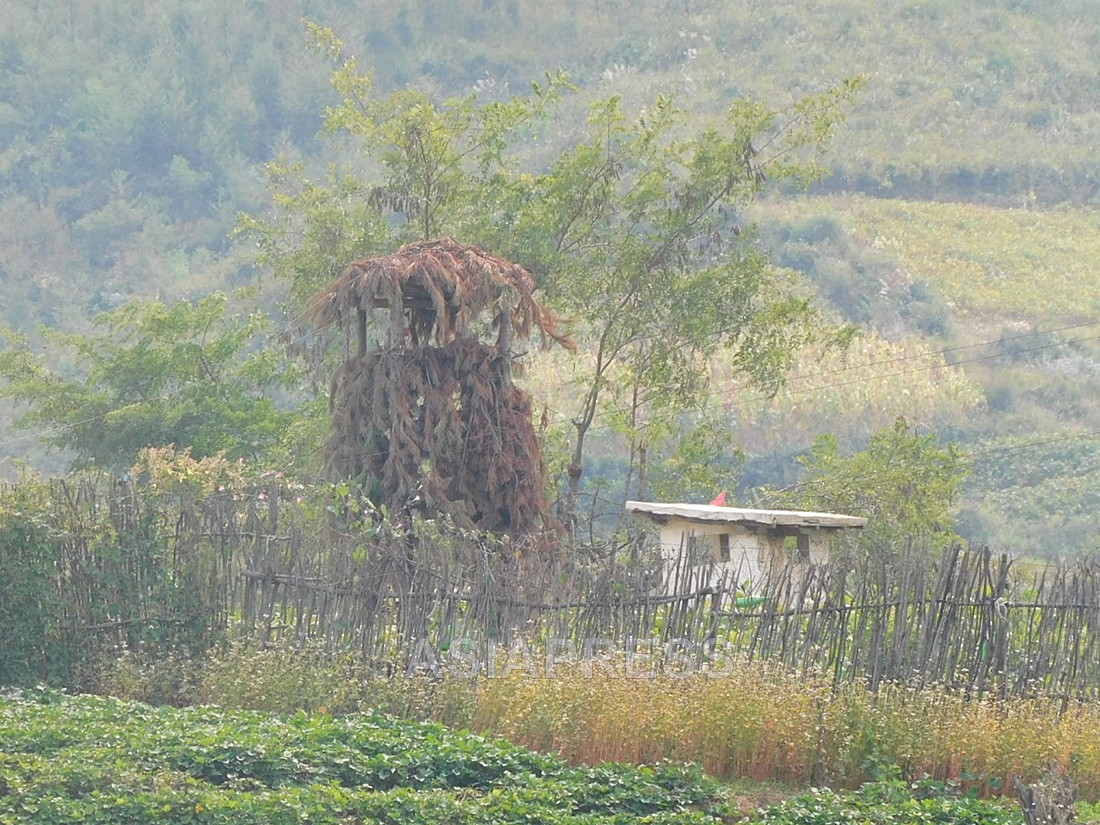
◆ Civilian paramilitary units watch over border patrol
Photos 2 and 3 show a sentry post built in the middle of a field. The sentry post appears to be guarding against thieves and people crossing the border given that it is facing the Yalu River. The structure is poorly made with tree branches and leaves, suggesting that it is manned by a member of the paramilitary “Worker-Peasant Red Guards,” not the border patrol.
Thus, the person manning the sentry post is a farmer. In the past, there were many cases where border guards took bribes from local people to turn a blind eye to border crossings and smuggling, so one of the farmer’s tasks is to surveil the activities of border guards.
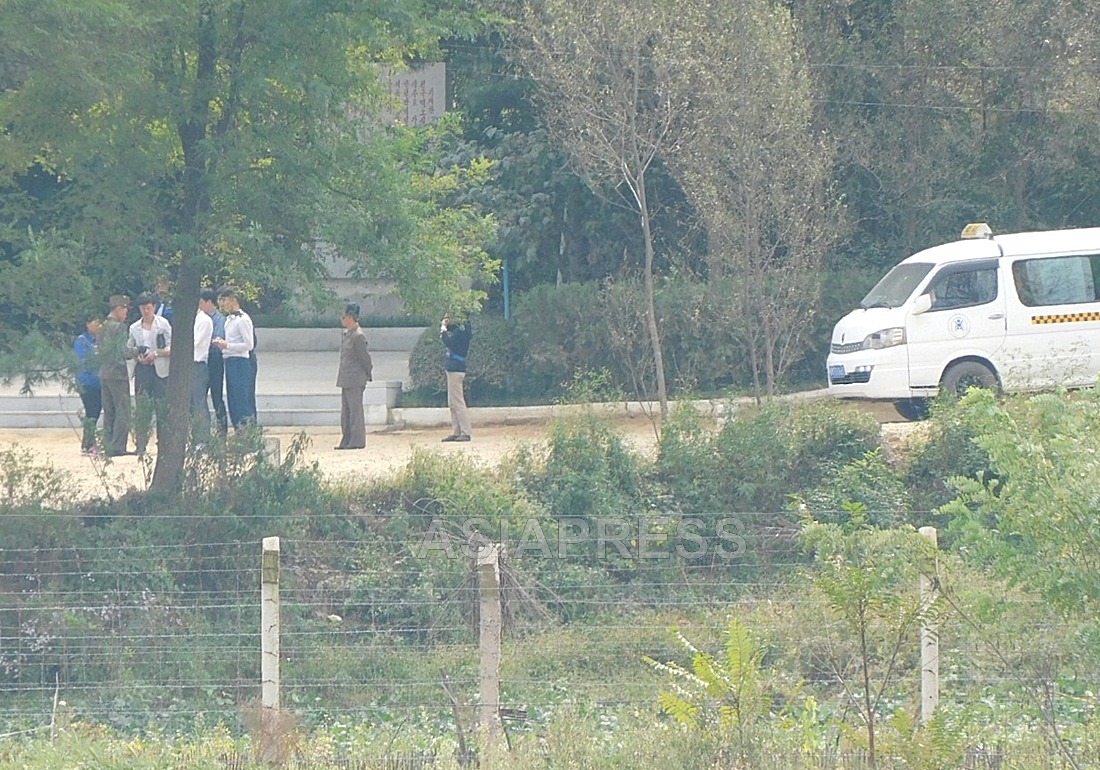
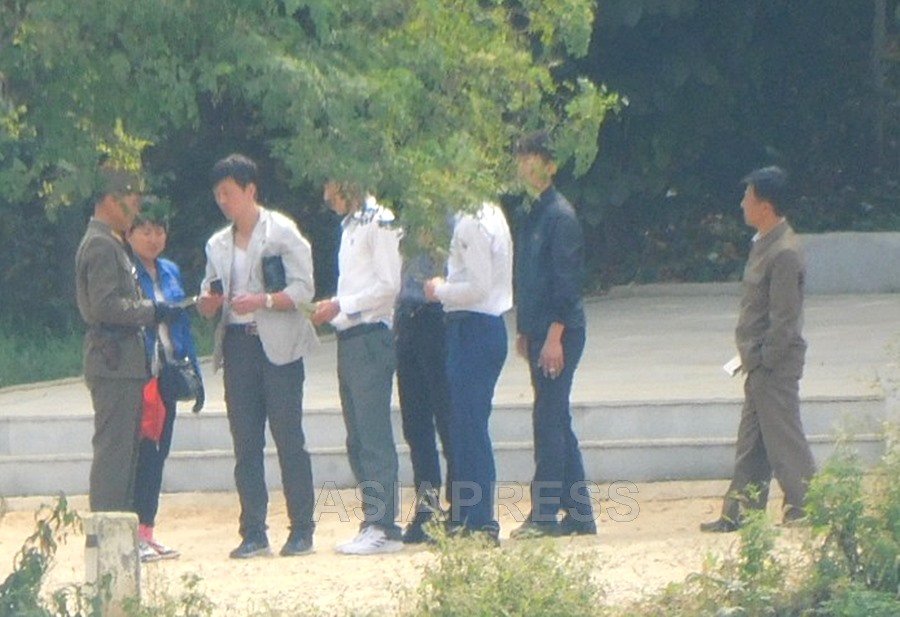
◆ Camera lens captures an inspection
Photos 4 and 5 show a soldier inspecting a vehicle. The sentry post is a “No. 10 guard post,” which is run by the Ministry of State Security. Passengers from the taxi stopped at the sentry post have left the vehicle to be inspected one-by-one by a guard. The passengers appear to be office workers, but a defector who saw the photos remarked that the passengers could be “cadres from Pyongyang or Sinuiju or trade company workers.” No. 10 guard posts inspect people’s IDs, travel passes, and cell phones.
Photo 6 shows a taxi going over a bridge after passing through inspection. Thick barbed-wire fencing can be seen even on the guardrails of the bridge.
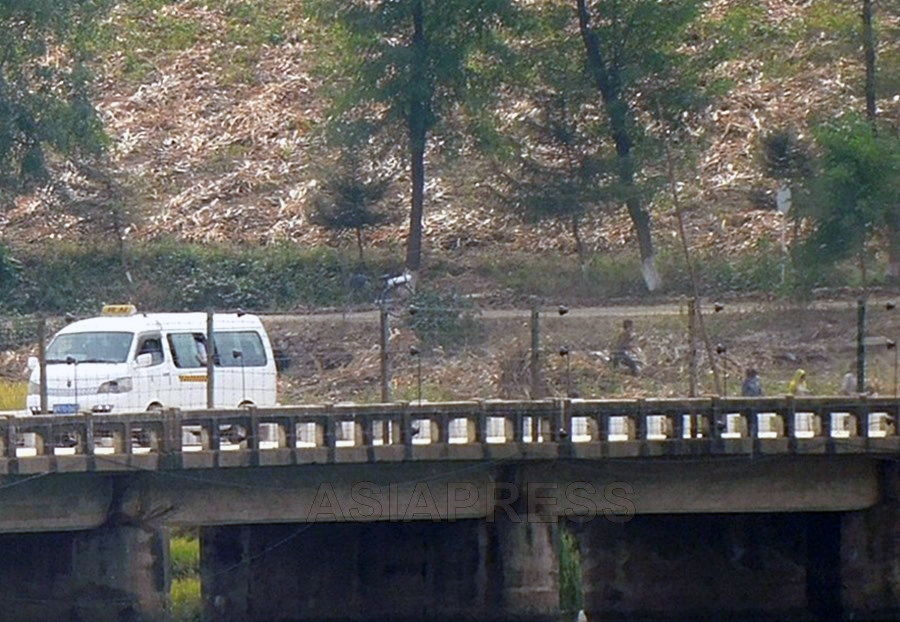
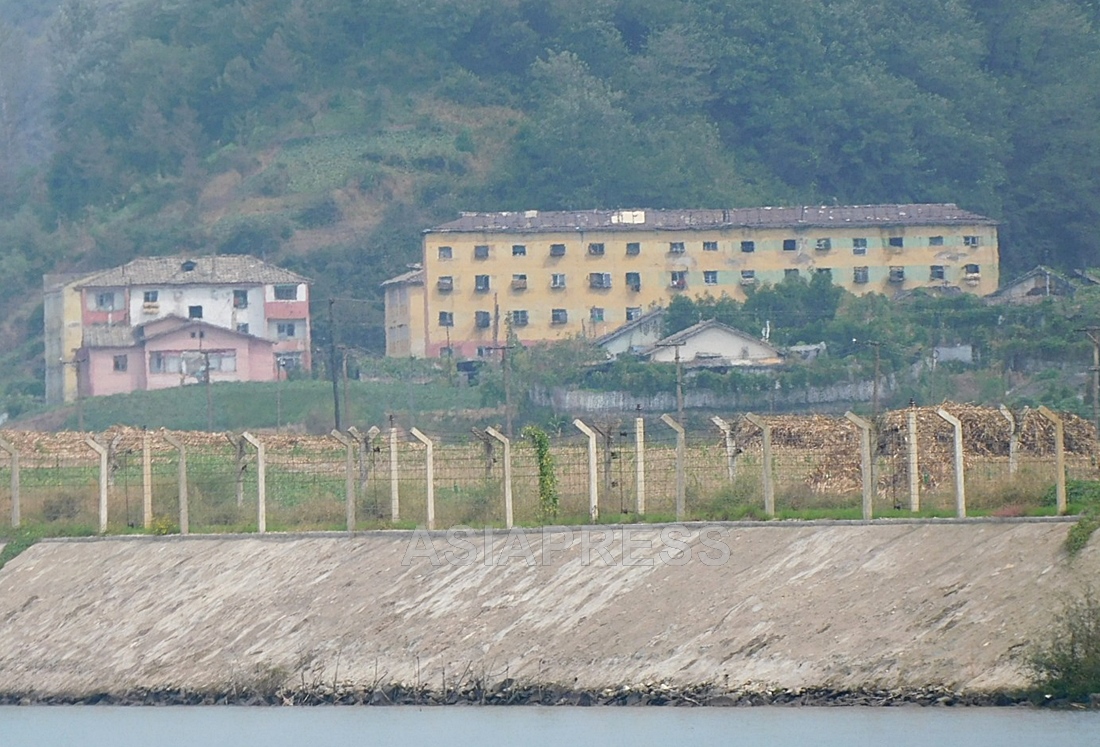
◆ North Koreans are “birds trapped in a birdcage”
Photo 7 shows a multi-layered network of barbed-wire fencing. The field behind the fencing looks like a buffer zone. Even people who are farming nearby must get permission to enter buffer zones. In August 2020, North Korea’s national police agency announced that anyone who entered the buffer zones without permission would be fired upon. The structure in the background appears to be an apartment.
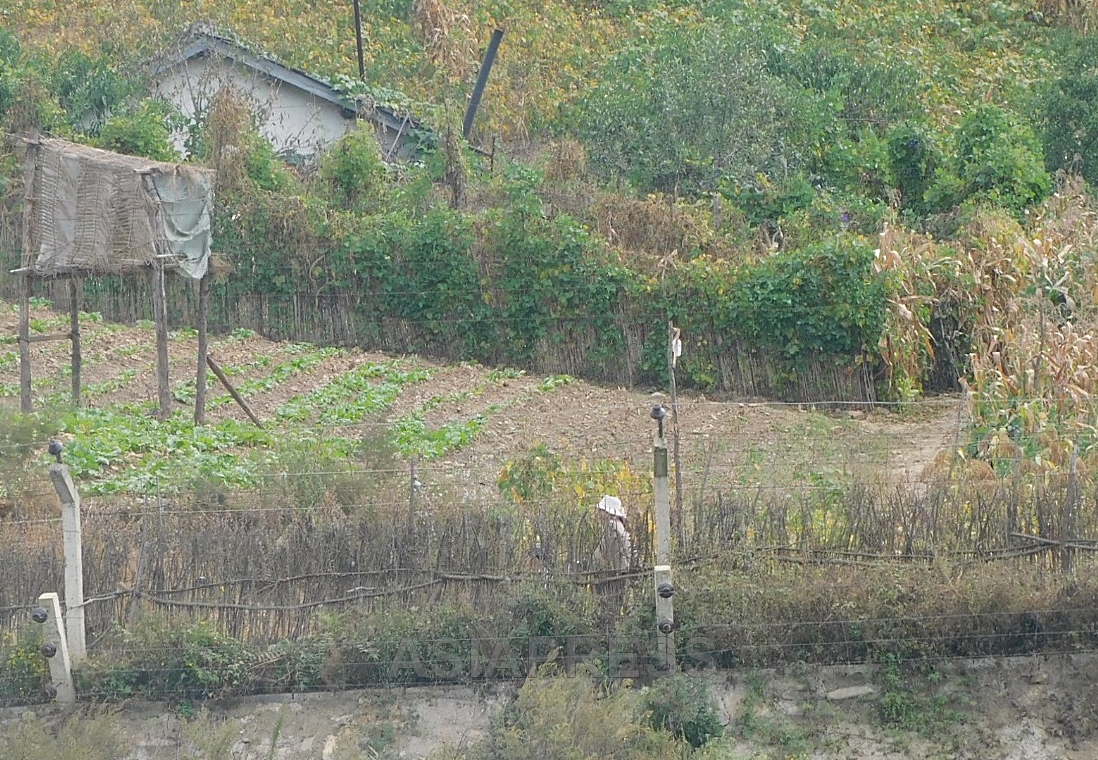
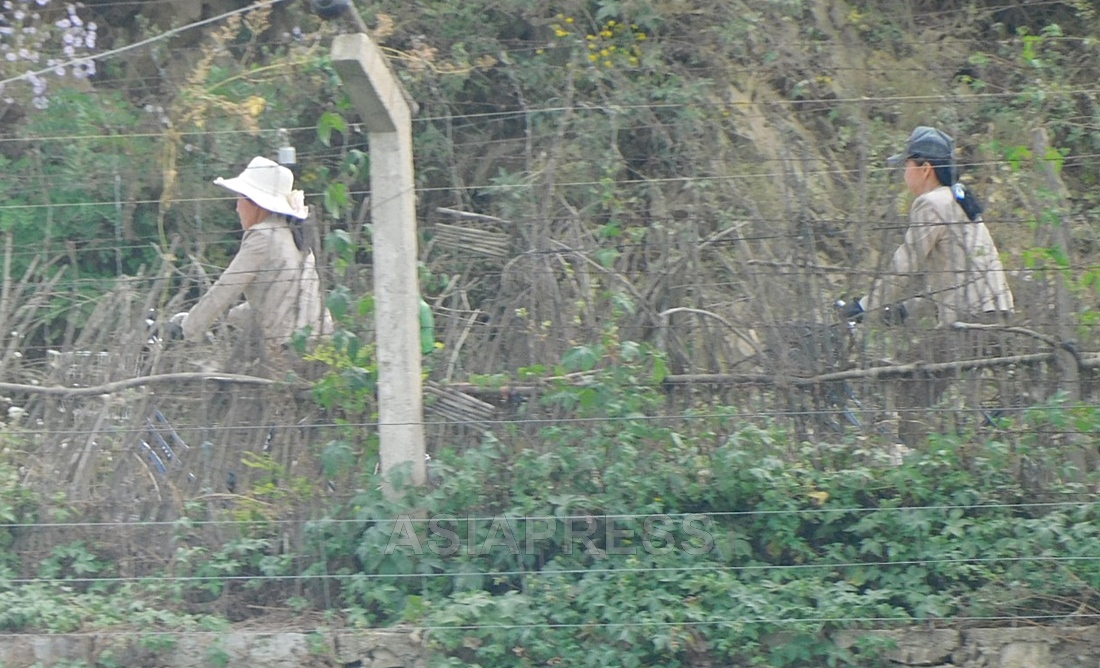
Photos 8 and 9 show women walking or riding bikes around barbed-wire fencing. High voltage fencing and a structure for monitoring the fields for thieves can also be seen. Photo 10 shows a border guard with his back turned toward the camera.
All the photos were taken on the Chinese side of the border across from Sakju County in late September 2023. (ASIAPRESS)
※ ASIAPRESS communicates with reporting partners through Chinese cell phones smuggled into North Korea. ( To 6 >> )
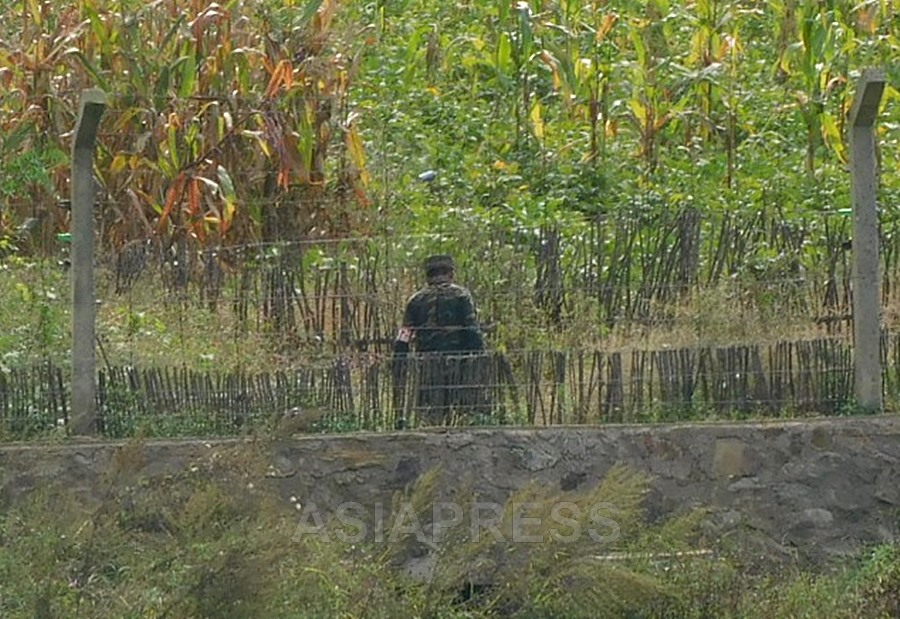
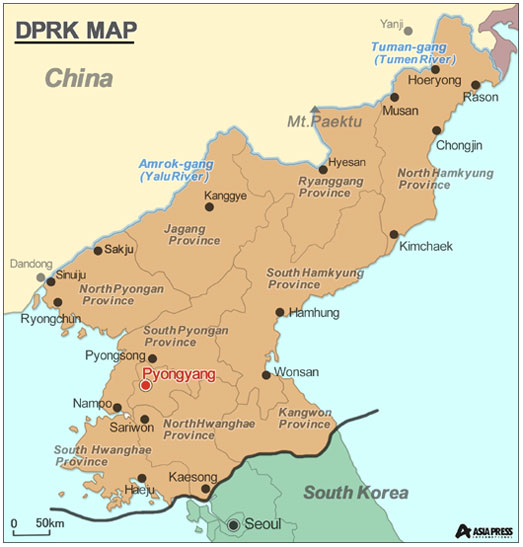
- <Inside N. Korea> A recent report on conditions at farms (7) Many people mobilized to harvest this year’s good yield of potatoes… But, “several tons of potatoes are going rotten in a storage facility each day”
- <Inside N. Korea > A recent report on conditions at farms (6) Major investigation underway after end of harvest to uncover corruption by cadres…Unfair punishment causes uproar on one farm
- <Inside N. Korea> A recent report on conditions at farms (4) Telescopic lens shows the present conditions in North Korea’s farming communities -1 Photographs show people mobilized for farming (5 recent photos)
- <Inside N. Korea> A recent report on conditions at farms (3) Thieves from the cities lead to strict monitoring of farming areas…farmers face tough times trying to earn cash (4 recent photos)
- <Inside N. Korea> A recent report on conditions at farms (2) The military is given priority over harvested crops because “there are many soldiers suffering from malnutrition”…In a rare move, the military takes crops directly from fields (3 recent photos)
- <Inside N. Korea> A recent report on conditions at farms (1) The harvest is better than last year, but lack of materials remains a serious problem (4 recent photos)
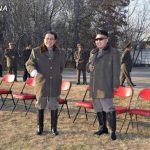

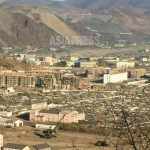
![<PHOTO REPORT>Sino - N.Korea Border [PART1]Wire Fence Installed Upstream on the Amrok-gang (Yalu River)](https://www.asiapress.org/rimjin-gang/wp-content/uploads/2018/07/20140418_r_asiapress02X450-150x150.jpg)
